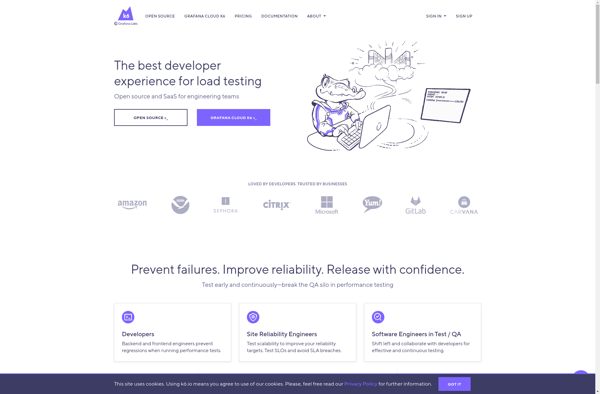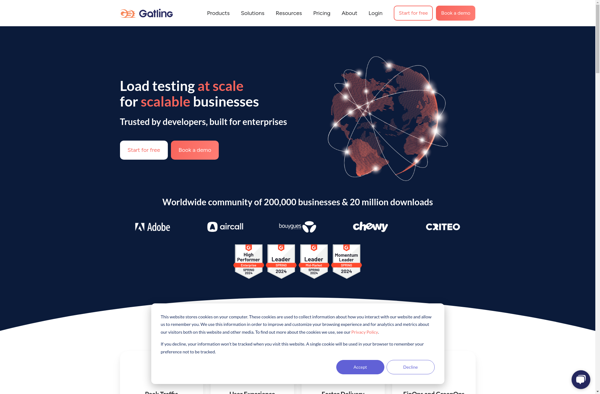Description: k6 is an open-source load testing tool for testing the performance of web applications. It is scriptable in JavaScript and aims to provide an easy way to simulate realistic user traffic for load testing.
Type: Open Source Test Automation Framework
Founded: 2011
Primary Use: Mobile app testing automation
Supported Platforms: iOS, Android, Windows
Description: Gatling.io is an open-source load and performance testing framework based on Scala, Akka and Netty. It allows users to simulate load on a system and analyze overall performance under various user loads. Gatling is used for testing APIs, microservices and web applications.
Type: Cloud-based Test Automation Platform
Founded: 2015
Primary Use: Web, mobile, and API testing
Supported Platforms: Web, iOS, Android, API

